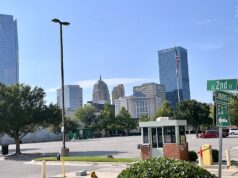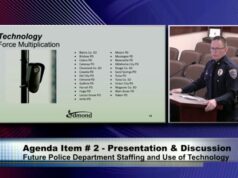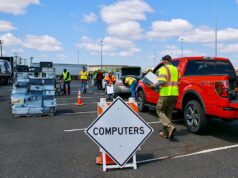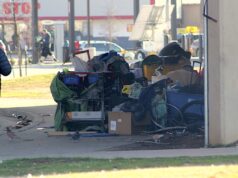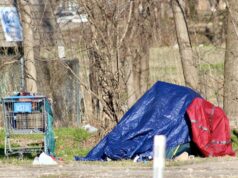The long-troubled American Indian Cultural Center has a new name, and a target date for opening after more than a decade of controversy and headaches for those involved.
The newly re-named First Americans Museum is scheduled to open in May 2021, officials announced Thursday.
Construction began in 2006 on the state-created project, which aims to chronicle Native American history and culture. Work stalled six years later as the Oklahoma State Senate declined to pass additional bonds, leaving it to sit more or less untouched on the southeast side of the I-40 and I-35 interchange in Oklahoma City ever since.
Evidence of its status as a shuttered construction project could still be seen during a tour provided to media Thursday. Insulation in uncovered walls looks weathered, and much of the building remains a shell. Inside, construction workers plow ahead on scaffolding and cherry pickers.
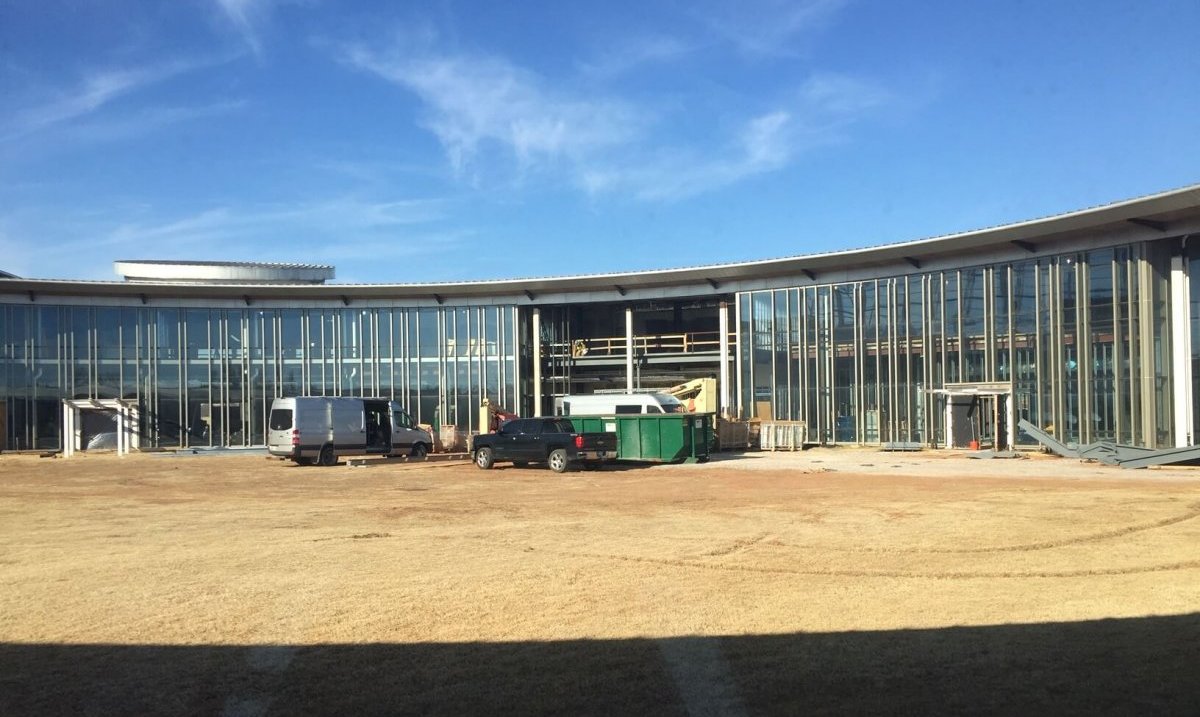
While the stone and mortar are one thing, those involved in the project saw a need for a fresh start and that included a new name.
“Our former name was a mouthful and not historically accurate,” First Americans Museum executive director James Pepper Henry said. “When referencing American Indian people, we acknowledge there is no one name that represents all the complexities of so many diverse nations in one concise term. Our new name helps convey the institution’s intention to share stories, history and culture from a first-person perspective.”
Oklahoma City Mayor David Holt, a member of the Osage Nation, said the name could become transcendent.
“I think it’s more meaningful than this museum,” he said. “I think it’s a name and phrase that could become useful across our culture, whether it be Indigenous or Native Americans, this is a name that will rival those nomenclatures.”

First Americans Museum will have lots of space
In all, the First Americans Museum will be massive, with more than 175,000 square feet for exhibits, a theater, a gift shop and other interactive amenities including an adult and kids climbing room modeled after a pop-up storybook.
At a cost of $175 million when completed, the museum will include dozens of items on a 10-year loan from The Smithsonian, as well as other exhibits from the 39 tribal nations within the boundaries of Oklahoma.
Funding for the project comes from a joint venture between the City of OKC, the state of Oklahoma, the Chickasaw Nation and private donations. Holt said the project will be important to Oklahoma City’s continued development.
“This is an amazing project,” Holt said. “This is like putting a Smithsonian Institution right here in Oklahoma City. Every week someone asks me what’s up with that museum out there? Are they going to open that thing? It’s time to get excited about the opening of this museum, which will be an unbelievable amenity here in Oklahoma City.”
Holt said MAPS 4 will complement the museum with a bridge that will allow access from the river. Oklahoma City voters overwhelmingly approved nearly $1 billion for the latest MAPS proposal Tuesday.

Impact, background of First Americans Museum
The economic impact of the First Americans Museum could be big. A study by the Greater Oklahoma City Chamber of Commerce says the museum could have a $190 million impact annually, with that total rising to $3.8 billion over 20 years.
That’s a far cry where things were a decade ago. Plans for the center date back to the mid 1990s. Initially funded with $63 million in state bonds in 2005, work stopped when a request for $40 million in additional bonds failed to pass the Oklahoma State Senate in 2012. That led to several years of debate about the property’s future. With funding secured from the Chickasaw Nation and others, construction ramped up again earlier this year.










